
Montevideo Coast: Uruguay's Serene Seaside Escape
Montevideo Coast in Uruguay: A perfect mix of city life and beach relaxation with stunning views, rich culture, and vibrant local experiences.
Montevideo Coast is a gem in Uruguay that offers a perfect blend of urban life and beach relaxation. Stretching along the Rio de la Plata, this coastal area provides breathtaking views of the water and easy access to soft sandy beaches. Whether you're looking to sunbathe, swim, or simply take in the scenery, Montevideo Coast has something for everyone. Stroll along the Rambla, a long promenade that hugs the shoreline. It's ideal for walking, biking, or just enjoying the sea breeze. You can also find charming cafes and restaurants where you can sample local cuisine while watching the waves. Montevideo Coast is not just about the beaches. The area is rich in culture, with numerous museums, galleries, and historical sites nearby. Visit the Mercado del Puerto to experience local food and crafts, or explore the Ciudad Vieja, the old town with its colonial architecture and vibrant street art. For nature lovers, the coast offers several parks and green spaces perfect for picnicking or a leisurely walk.
Local tips in Montevideo Coast
- Best Time to Visit: The ideal time is from November to March when the weather is warm and sunny.
- Local Cuisine: Don't miss trying chivito, a popular Uruguayan sandwich, at a local cafe.
- Public Transport: Use local buses or rent a bike to easily get around the coastal area.
- Safety: The area is generally safe, but it's always best to stay aware of your surroundings, especially at night.
- Cash: Carry some cash for small purchases, as not all places accept credit cards.
Montevideo Coast: Uruguay's Serene Seaside Escape
Montevideo Coast is a gem in Uruguay that offers a perfect blend of urban life and beach relaxation. Stretching along the Rio de la Plata, this coastal area provides breathtaking views of the water and easy access to soft sandy beaches. Whether you're looking to sunbathe, swim, or simply take in the scenery, Montevideo Coast has something for everyone. Stroll along the Rambla, a long promenade that hugs the shoreline. It's ideal for walking, biking, or just enjoying the sea breeze. You can also find charming cafes and restaurants where you can sample local cuisine while watching the waves. Montevideo Coast is not just about the beaches. The area is rich in culture, with numerous museums, galleries, and historical sites nearby. Visit the Mercado del Puerto to experience local food and crafts, or explore the Ciudad Vieja, the old town with its colonial architecture and vibrant street art. For nature lovers, the coast offers several parks and green spaces perfect for picnicking or a leisurely walk.
When is the best time to go to Montevideo Coast?
Iconic landmarks you can’t miss
Montevideo Letters
Discover the iconic Montevideo Letters along the stunning Rambla, where art meets the breathtaking beauty of Uruguay's coastline.

Constitution Plaza
Discover the historical significance and vibrant culture of Constitution Plaza in Montevideo, a must-visit park blending leisure and history.

Plaza Virgilio
Explore the lush landscapes and scenic views of Plaza Virgilio, the tranquil park that embodies the spirit of Montevideo.

Francisco Lecocq Zoological
Visit Francisco Lecocq Zoological Park in Montevideo for an unforgettable journey through diverse wildlife and beautiful landscapes, perfect for all ages.

Playa Ramirez
Experience the tranquility of Playa Ramirez, a beautiful beach in Montevideo, perfect for relaxation, outdoor activities, and local cuisine.

Fountain of the Padlocks
Explore the Fountain of the Padlocks in Montevideo, a romantic landmark symbolizing love and connection, perfect for unforgettable photos and leisurely strolls.

Palacio Salvo
Explore the majestic Palacio Salvo in Montevideo, a historic landmark showcasing stunning architecture and rich cultural heritage.

Fortress General Artigas
Explore the captivating Fortress General Artigas, an army museum offering stunning views and a deep dive into Uruguay's military history.

Gateway of the Citadel
Discover the Gateway of the Citadel in Montevideo, a historical landmark that reveals Uruguay's rich architectural heritage and vibrant cultural history.
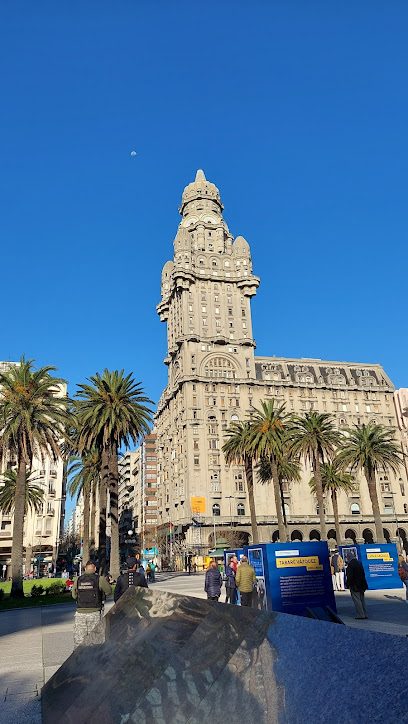
Palacio Legislativo
Explore the architectural beauty and historical significance of the Palacio Legislativo, the heart of Uruguay's governance and culture.

Carreta Monument
Explore the Carreta Monument in Montevideo, a stunning tribute to Uruguay's heritage, blending history with artistic beauty in a vibrant urban setting.

Montevideo Metropolitan Cathedral
Discover the Montevideo Metropolitan Cathedral, a stunning neoclassical masterpiece reflecting Uruguay's rich history and spiritual heritage.

Museo de Historia del Arte
Discover the rich artistic heritage of Uruguay at the Museo de Historia del Arte, a captivating historical museum in Montevideo showcasing diverse art collections.
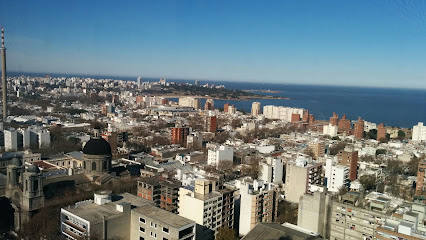
Obelisk to the Constituents of 1830
Discover the Obelisk to the Constituents of 1830, a monumental symbol of Uruguay's history and democracy in the heart of Montevideo's Parque Batlle.

Pre-Columbian and Indigenous Art Museum
Explore the fascinating world of Pre-Columbian and Indigenous art at Montevideo's premier museum, showcasing rich cultural heritage and stunning artifacts.

Unmissable attractions to see
Francisco Lecocq Zoological
Discover the vibrant wildlife and lush landscapes at Francisco Lecocq Zoological Park in Montevideo, a must-visit ecological haven for nature lovers.

Museo de Historia del Arte
Explore the rich cultural heritage of Uruguay at Museo de Historia del Arte, a captivating destination for art lovers and history enthusiasts.

Pre-Columbian and Indigenous Art Museum
Discover the captivating history of South America's indigenous peoples at the Pre-Columbian and Indigenous Art Museum in Montevideo.

National Museum of Natural History
Discover the captivating world of nature at Montevideo's National Museum of Natural History, a must-see destination for all nature lovers and curious minds.

Museo Gurvich
Discover the vibrant artistry of Joaquín Gurvich at Museo Gurvich, an iconic cultural attraction in Montevideo, Uruguay.

Bodega Angel Fallabrino
Experience the best of Uruguayan viticulture at Bodega Angel Fallabrino, where tradition and passion blend to create exceptional wines.
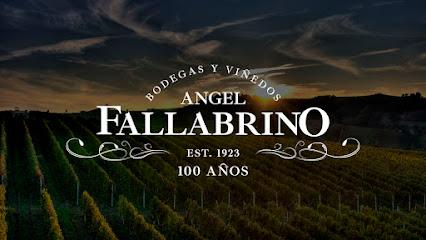
Bodegas Carrau
Explore Montevideo's Bodegas Carrau: A premier winery offering exquisite tastings, vineyard tours, and breathtaking views of Uruguayan wine country.

Librería Linardi Y Risso
Explore the literary treasures of Librería Linardi Y Risso in Montevideo, a bookstore that captures the essence of culture and reading.

Bodega Santa Rosa
Discover the charm of Bodega Santa Rosa, where exquisite wines and stunning vineyard views create an unforgettable experience in Montevideo.

Essential places to dine
Don Andres
Experience authentic Uruguayan cuisine at Don Andres - where flavor meets tradition in Montevideo's vibrant dining scene.

La Cocina de Pedro
Experience authentic Uruguayan cuisine at La Cocina de Pedro - where tradition meets flavor in every dish.

La Perdiz
Discover La Perdiz in Montevideo: A culinary haven renowned for its exquisite steaks and vibrant atmosphere that captures the essence of Uruguayan dining.

Francis
Savor exquisite Uruguayan cuisine at Francis in Montevideo - where culinary artistry meets elegance.
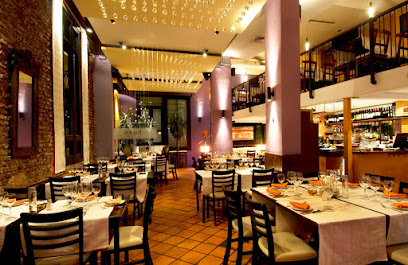
Fellini Pocitos
Experience authentic Italian cuisine at Fellini Pocitos in Montevideo – where tradition meets taste in a vibrant setting.

Jacinto
Discover the flavors of Uruguay at Jacinto – where tradition meets innovation in every dish.

La Corte Restaurant
Discover the authentic flavors of Uruguayan cuisine at La Corte Restaurant in Montevideo - where tradition meets taste.

Restaurant Tandory
Discover the vibrant fusion of flavors at Restaurant Tandory in Montevideo - where Asian cuisine meets culinary creativity.

Uruguay Natural Parrilla Gourmet
Discover authentic Uruguayan barbecue at Uruguay Natural Parrilla Gourmet - where tradition meets flavor in every bite.

Puerto Mulata
Experience exquisite seafood and stunning coastal views at Puerto Mulata in Montevideo – a culinary delight for every tourist.

La Commedia
Discover La Commedia in Montevideo: Where local flavors meet an inviting atmosphere in this beloved culinary hotspot.

Hostia RestoBar
Experience vibrant flavors at Hostia RestoBar in Montevideo – where local cuisine meets international flair in an inviting atmosphere.

Es Mercat
Discover Es Mercat in Montevideo: A Seafood Paradise Blending Traditional Flavors with Modern Culinary Artistry.

La Fonda
Experience authentic Uruguayan cuisine at La Fonda - where tradition meets organic freshness in the heart of Montevideo.

Baco Vino y Bistro
Experience the best of Uruguayan cuisine at Baco Vino y Bistro—where exquisite food meets exceptional wines.

Markets, malls and hidden boutiques
Tres Cruces Shopping
Explore Tres Cruces Shopping Mall in Montevideo for a unique shopping and cultural experience, featuring diverse shops, dining, and entertainment options.

Nuevocentro Shopping
Experience the excitement of shopping in Montevideo at Nuevocentro Shopping, a hub of fashion, dining, and entertainment for all ages.

Montevideo Shopping Center
Discover the vibrant Montevideo Shopping Center, where shopping, dining, and entertainment come together in the heart of Uruguay's capital.

Punta Carretas Shopping
Explore Punta Carretas Shopping in Montevideo for an unparalleled shopping experience with local and international brands, dining, and entertainment.

Parque Jose Enrique Rodó
Experience the natural beauty and cultural vibrancy of Parque Jose Enrique Rodó, Montevideo's serene city park with lush greenery and vibrant events.
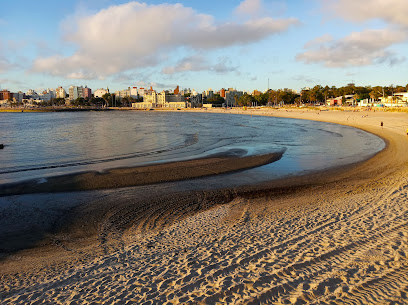
Port Market
Discover the culinary and cultural heart of Montevideo at the lively Port Market, where local flavors and artisanal crafts come together.

Feria de Tristan Narvaja
Discover the vibrant Feria de Tristan Narvaja, Montevideo's largest flea market, where culture, food, and unique treasures await every Sunday.

Cagancha Square
Discover Cagancha Square, Montevideo’s vibrant park and cultural hub, where history, art, and community come together in a stunning urban landscape.

El Rey Del Entretenimiento
Discover the ultimate sporting goods and toys destination in Montevideo at El Rey Del Entretenimiento, where fun meets quality shopping!
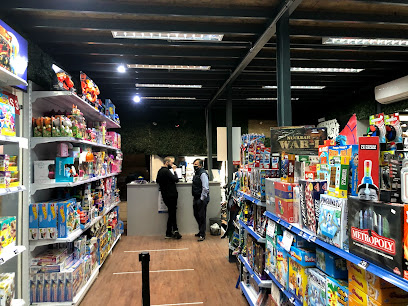
Tiendas Montevideo - Mataojo
Discover unique home goods at Tiendas Montevideo - Mataojo, a top shopping destination in Montevideo for souvenirs, essentials, and stylish finds.
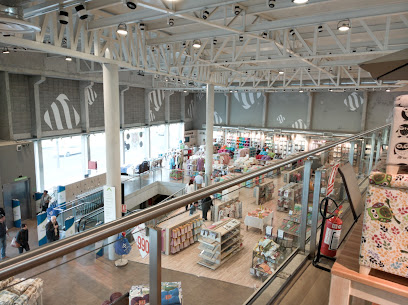
Museo Gurvich
Explore the vibrant art and cultural heritage of Uruguay at Museo Gurvich, showcasing the works of Joaquín Gurvich and more.
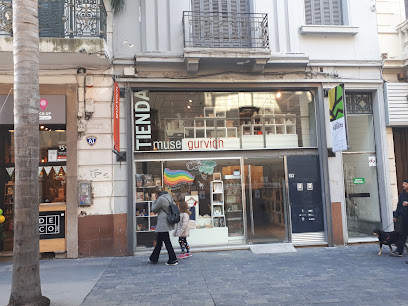
Tiendas Montevideo - Ciudad Vieja
Explore Tiendas Montevideo for unique home goods that celebrate Uruguayan craftsmanship in the heart of Ciudad Vieja.

Mercado de los Artesanos
Explore the Mercado de los Artesanos in Montevideo for unique crafts and a taste of Uruguayan culture, all in a vibrant market setting.

Indian Emporium
Discover the vibrant styles of Indian Emporium in Montevideo, where unique fashion meets local culture, perfect for every tourist's wardrobe.

Licorería Las Vizcarras
Explore Licorería Las Vizcarras in Montevideo for an exquisite selection of local and international spirits, including rare Irish whiskeys.

Essential bars & hidden hideouts
Burlesque
Discover the lively nightlife at Burlesque, Montevideo's premier bar for entertainment, cocktails, and unforgettable performances.

Baar Fun Fun
Experience the vibrant nightlife of Montevideo at Baar Fun Fun, where great drinks and lively music create unforgettable memories.

The Puta Madre Bar
Experience the vibrant nightlife and delicious cuisine at The Puta Madre Bar in Montevideo, the perfect blend of fun and flavor.
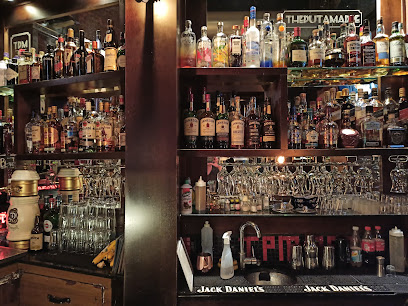
Bar Tabaré
Discover the vibrant energy of Bar Tabaré, Montevideo's favorite bar for craft beers, cocktails, and local flavors in a lively atmosphere.

The Shannon
Experience the warmth of an Irish pub in Montevideo, where delicious food and lively music create an unforgettable atmosphere.
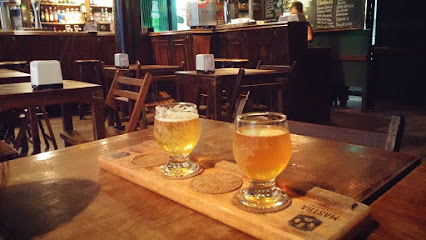
Jackson Bar
Discover the lively atmosphere and diverse drink offerings at Jackson Bar, a vibrant nightlife hotspot in Montevideo, Uruguay.

Do you remember? Pub
Experience the vibrant nightlife of Montevideo at Do You Remember? Pub, where great drinks and lively atmosphere await.

Vintage Pool Pub
Experience the vibrant nightlife of Montevideo at Vintage Pool Pub, where pool and cocktails create the perfect blend of fun and flavor.

Bar Andorra
Experience the vibrant nightlife at Bar Andorra, Montevideo's hotspot for delicious drinks and lively atmosphere.

Bluzz Bar
Discover Montevideo's nightlife at Bluzz Bar, where signature cocktails meet an electric atmosphere for an unforgettable experience.

Bar Bremen
Discover the vibrant nightlife of Montevideo at Bar Bremen, where delicious drinks and lively atmosphere create unforgettable memories.

Kfe Bar
Experience the vibrant nightlife and cultural richness at Kfe Bar in Montevideo, a must-visit destination for food and culture enthusiasts.

Fénix Bar
Immerse yourself in Montevideo's nightlife at Fénix Bar, where vibrant drinks and a lively atmosphere await you every evening.
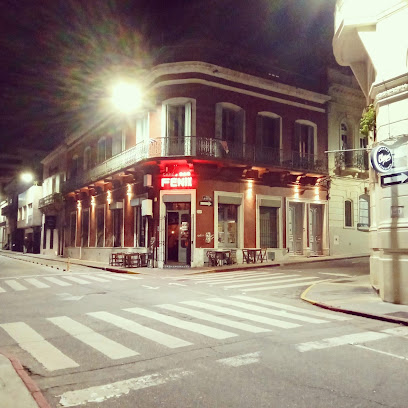
Finisterre Bar
Discover the lively ambiance and exceptional drink selection at Finisterre Bar in Montevideo, the perfect spot to enjoy the local nightlife.
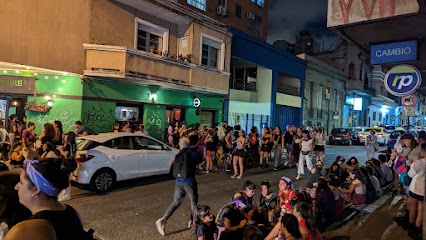
Montevideo al Sur Bar
Discover the vibrant atmosphere of Montevideo al Sur Bar, where local beers and warm hospitality create an unforgettable experience in Uruguay.

Local Phrases about Montevideo Coast
-
- HelloHola
[oh-la] - GoodbyeAdiós
[ah-dyohs] - YesSí
[see] - NoNo
[noh] - Please/You're welcomePor favor/De nada
[por fah-vohr/deh nah-dah] - Thank youGracias
[grah-syahs] - Excuse me/SorryDisculpe/Perdón
[dees-kool-peh/pehr-dohn] - How are you?¿Cómo estás?
[koh-moh ehs-tahs] - Fine. And you?Bien. ¿Y tú?
[byehn. ee too] - Do you speak English?¿Hablas inglés?
[ah-blahs een-glehs] - I don't understandNo entiendo
[noh ehn-tyehn-doh]
- HelloHola
-
- I'd like to see the menu, pleaseMe gustaría ver el menú, por favor
[meh goos-tah-ree-ah behr ehl meh-noo, por fah-vohr] - I don't eat meatNo como carne
[noh koh-moh kahr-neh] - Cheers!Salud!
[sah-lood] - I would like to pay, pleaseQuisiera pagar, por favor
[kee-syeh-rah pah-gahr, por fah-vohr]
- I'd like to see the menu, pleaseMe gustaría ver el menú, por favor
-
- Help!¡Ayuda!
[ah-yoo-dah] - Go away!¡Vete!
[veh-teh] - Call the Police!¡Llama a la policía!
[yah-mah ah lah poh-lee-see-ah] - Call a doctor!¡Llama a un médico!
[yah-mah ah oon meh-dee-koh] - I'm lostEstoy perdido/a
[ehs-toy pehr-dee-doh/dah] - I'm illEstoy enfermo/a
[ehs-toy ehn-fehr-moh/dah]
- Help!¡Ayuda!
-
- I'd like to buy...Me gustaría comprar...
[meh goos-tah-ree-ah kohm-prahr] - I'm just lookingSolo estoy mirando
[soh-loh ehs-toy meer-ahn-doh] - How much is it?¿Cuánto cuesta?
[kooahn-toh kwehs-tah] - That's too expensiveEsto es demasiado caro
[ehs-toh ehs deh-mah-syah-doh kah-roh] - Can you lower the price?¿Puedes bajar el precio?
[pweh-dehs bah-hahr ehl pree-syoh]
- I'd like to buy...Me gustaría comprar...
-
- What time is it?¿Qué hora es?
[keh oh-rah ehs] - It's one o'clockEs la una
[ehs lah oo-nah] - Half past (10)Las diez y media
[lahs dyehs ee meh-dee-ah] - MorningMañana
[mah-nyah-nah] - AfternoonTarde
[tahr-deh] - EveningNoche
[noh-cheh] - YesterdayAyer
[ah-yehr] - TodayHoy
[oy] - TomorrowMañana
[mah-nyah-nah] - 1Uno
[oo-noh] - 2Dos
[dohs] - 3Tres
[trehs] - 4Cuatro
[kwah-troh] - 5Cinco
[seen-koh] - 6Seis
[says] - 7Siete
[syeh-teh] - 8Ocho
[oh-choh] - 9Nueve
[nweh-veh] - 10Diez
[dyehs]
- What time is it?¿Qué hora es?
-
- Where's a/the...?¿Dónde está...?
[dohn-deh ehs-tah] - What's the address?¿Cuál es la dirección?
[kooahl ehs lah dee-rehk-syohn] - Can you show me (on the map)?¿Puedes mostrarme (en el mapa)?
[pweh-dehs mohs-trahr-meh (ehn ehl mah-pah)] - When's the next (bus)?¿Cuándo es el próximo (ómnibus)?
[kwan-doh ehs ehl proh-ksee-moh (ohm-nee-boos)] - A ticket (to ....)Un boleto (a ...)
[oon boh-leh-toh (ah ...)]
- Where's a/the...?¿Dónde está...?
History of Montevideo Coast
-
Montevideo was founded in 1724 by Bruno Mauricio de Zabala, a Spanish soldier. Its creation was part of Spain's strategy to curb Portuguese expansion into the region. The city's establishment played a crucial role in the geopolitical landscape of South America during the colonial period.
-
In 1807, during the Napoleonic Wars, British forces invaded Montevideo. The British occupied the city for a brief period before being driven out by Spanish and local forces. This invasion underscored the strategic importance of Montevideo's port in global trade routes.
-
Montevideo was a focal point during Uruguay's struggle for independence from Spain. The Battle of Montevideo in 1828 was a significant conflict where local forces secured a decisive victory against Spanish troops, paving the way for Uruguay's sovereignty.
-
From 1839 to 1851, Uruguay was embroiled in a civil conflict known as the Great War. Montevideo was a stronghold for the Colorado Party, which was supported by France and Brazil, against the Blancos, who had the backing of Argentina. The city's fortifications and port were crucial in sustaining the Colorado resistance.
-
In the late 19th and early 20th centuries, Montevideo emerged as a cultural and intellectual hub in South America. The city became renowned for its vibrant arts scene, with significant developments in literature, music, and theater, contributing to Uruguay's cultural identity.
-
The Port of Montevideo has been a key economic engine for the city and the country. Established in the 19th century, it facilitated trade and immigration, bringing diverse cultural influences and fostering economic growth. Today, it remains one of the most important ports in the Southern Cone.
-
The Rambla is a prominent feature of Montevideo's coastline. This scenic boulevard stretches along the coast and has been a central part of the city's social life since its development in the early 20th century. It is a popular spot for both locals and tourists, offering stunning views of the Rio de la Plata.
-
In December 1939, during World War II, the waters off the coast of Montevideo were the site of the Battle of the River Plate. This naval confrontation between the British and German forces resulted in the scuttling of the German pocket battleship Admiral Graf Spee. Montevideo's neutrality and its port facilities played a pivotal role during this event.
-
Montevideo is one of the birthplaces of Tango, a music and dance genre that originated in the Rio de la Plata region. The city's neighborhoods, particularly Barrio Sur, have been integral to the development and popularization of Tango, which has become a symbol of Uruguayan cultural heritage.
Montevideo Coast Essentials
-
Montevideo Coast is easily accessible from Carrasco International Airport (MVD), located about 20 kilometers from the city center. Direct flights are available from major cities in South America, as well as from Miami and Madrid. From the airport, you can take a taxi, a ride-sharing service like Uber, or book a shuttle to your destination along the coast. Public buses also operate between the airport and various points in Montevideo.
-
Montevideo's public transportation system includes buses and taxis, both of which are reliable and reasonably priced. The coastal area is well-connected by public buses, and there's a comprehensive network of bike lanes if you prefer cycling. Taxis and ride-sharing services are widely available and can be hailed on the street or through mobile apps. Renting a car is another option, particularly if you plan to explore beyond the Montevideo Coast.
-
The official currency in Uruguay is the Uruguayan Peso (UYU). Credit and debit cards are widely accepted in hotels, restaurants, and shops along the Montevideo Coast. ATMs are plentiful, especially in commercial areas. However, it’s a good idea to carry some cash for smaller establishments and street vendors. Currency exchange services are available at the airport, banks, and exchange offices.
-
Montevideo is generally a safe destination, but it's advisable to take standard precautions. Areas such as Ciudad Vieja and the port can be sketchy after dark, so avoid wandering alone at night. Petty crimes like pickpocketing can occur in crowded places, so keep an eye on your belongings. Stick to well-lit and populated areas, and use registered taxis or ride-sharing services for safe transportation.
-
In case of an emergency, dial 911 for immediate assistance. Montevideo has well-equipped hospitals and clinics. It's recommended to have travel insurance that covers medical emergencies. Pharmacies (farmacias) are widely available, and many are open 24/7. For police assistance, head to the nearest police station or contact the tourist police for help in English.
-
Fashion: Do dress casually and comfortably, but avoid overly revealing clothing, especially in more conservative areas. Religion: Do respect local customs, particularly in religious sites. Public Transport: Do be courteous and give up your seat to elderly passengers. Don't eat or drink on public transport. Greetings: Do greet people with a handshake or a kiss on the cheek. Eating & Drinking: Do try local delicacies like chivito and mate. Don’t refuse hospitality, as it’s considered impolite.
-
To experience Montevideo Coast like a local, take a stroll along the Rambla, a long promenade that stretches along the coastline. Visit local markets such as Mercado del Puerto to savor authentic Uruguayan cuisine. Engage with locals, who are generally friendly and eager to share insights about their city. Don’t miss the chance to watch a sunset from the Pocitos Beach, a favorite among locals.
Trending Landmarks in Montevideo Coast
-
Montevideo Letters
-
Constitution Plaza
-
Plaza Virgilio
-
Francisco Lecocq Zoological
-
Playa Ramirez
-
Fountain of the Padlocks
-
Palacio Salvo
-
Fortress General Artigas
-
Gateway of the Citadel
-
Palacio Legislativo
-
Carreta Monument
-
Montevideo Metropolitan Cathedral
-
Museo de Historia del Arte
-
Obelisk to the Constituents of 1830
-
Pre-Columbian and Indigenous Art Museum













